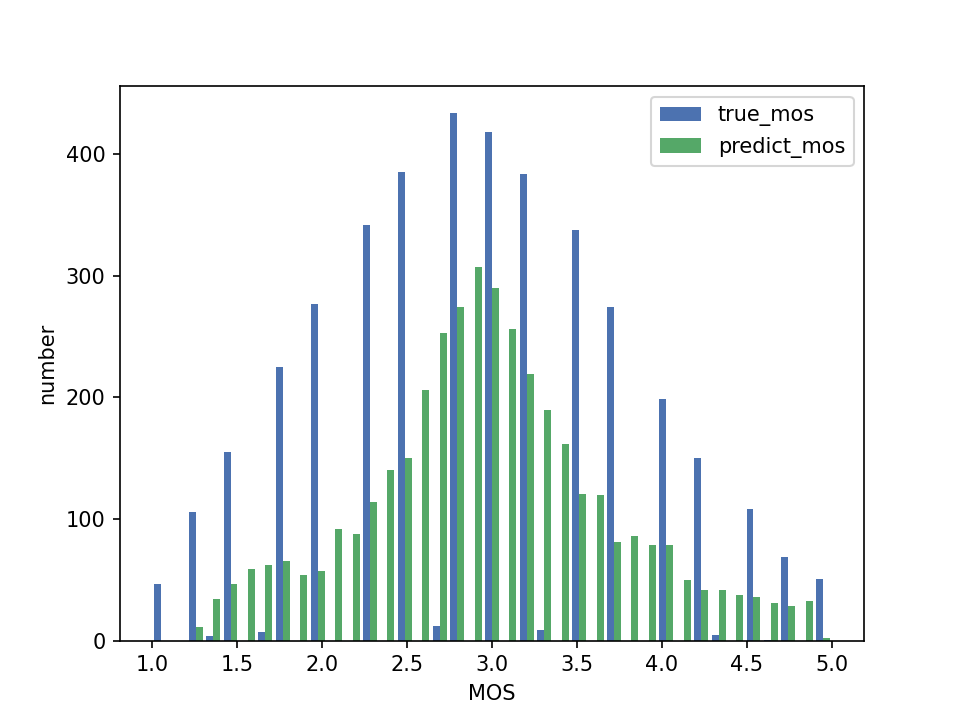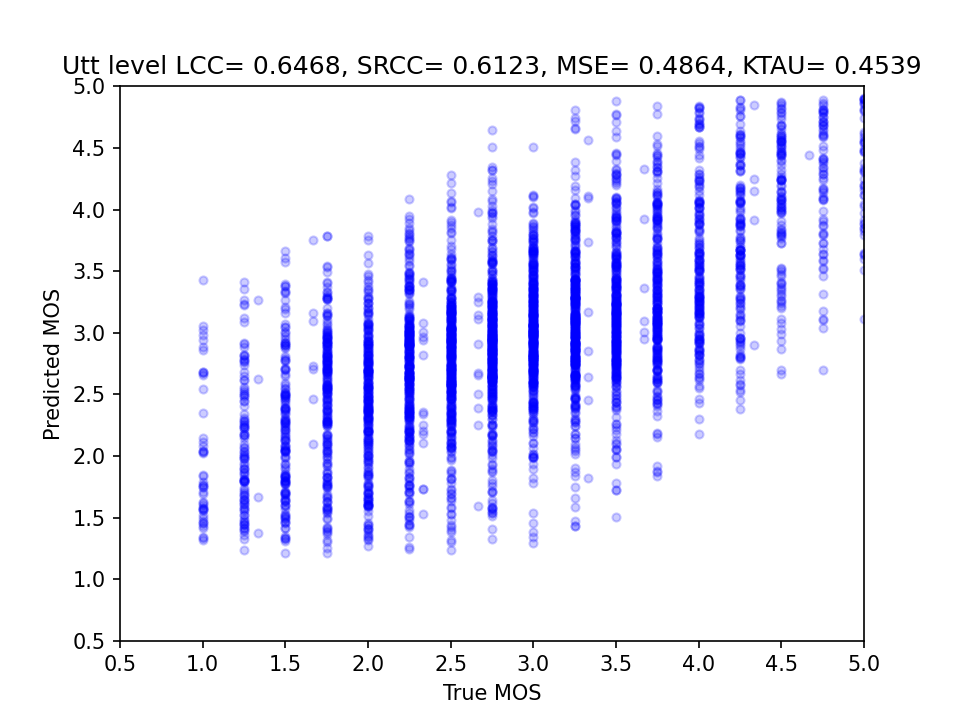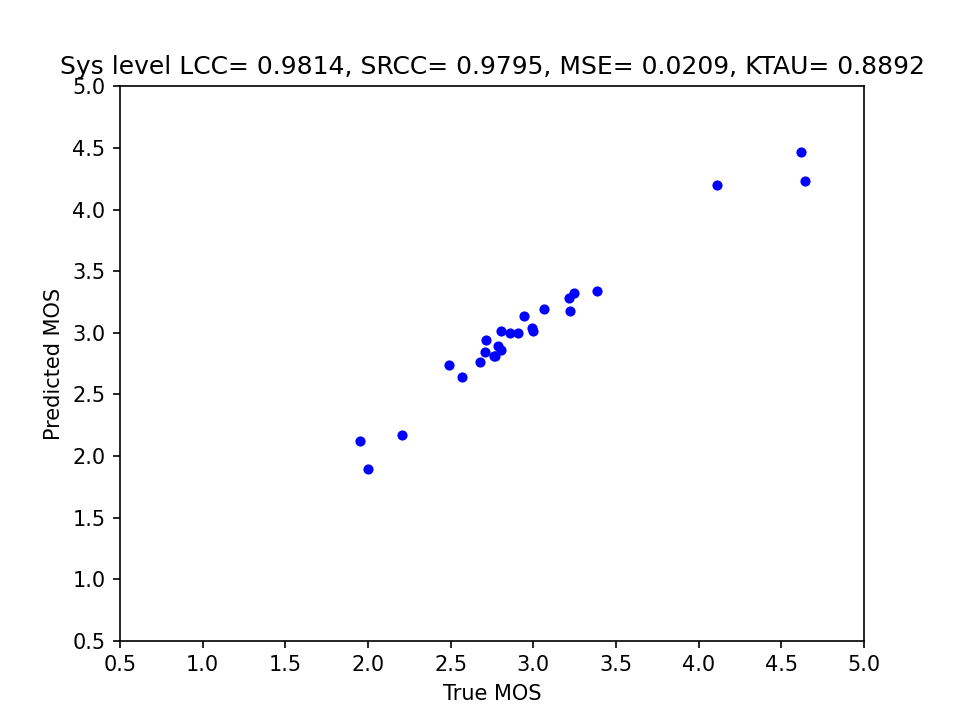Author: Wen-Chin Huang (Nagoya University) Email: wen.chinhuang@g.sp.m.is.nagoya-u.ac.jp
This is the official implementation of the paper "LDNet: Unified Listener Dependent Modeling in MOS Prediction for Synthetic Speech". This is a model that takes an input synthetic speech sample and outputs the simulated human rating.
- PyTorch 1.9 (versions not too old should be fine.)
- librosa
- pandas
- h5py
- scipy
- matplotlib
- tqdm
The following instructions are for the VCC2018 benchmark.
New: This system is also one of the baseline systems of the first VoiceMOS Challenge. Please refer to this document for detailed instructions.
# Download the VCC2018 dataset.
cd data
./download.sh vcc2018
We provide configs that correspond to the following rows in the above figure:
- (a):
MBNet.yaml - (d):
LDNet_MobileNetV3_RNN_5e-3.yaml - (e):
LDNet_MobileNetV3_FFN_1e-3.yaml - (f):
LDNet-MN_MobileNetV3_RNN_FFN_1e-3_lamb4.yaml - (g):
LDNet-ML_MobileNetV3_FFN_1e-3.yaml
python train.py --config configs/<config_name> --tag <tag_name>
By default, the experimental results will be stored in exp/<tag_name>, including:
model-<steps>.pt: model checkpoints.config.yml: the config file.idtable.pkl: the dictionary that maps listener to ID.training_<inference_mode>: the validation results generated along the training. This file is useful for model selection. Note that theinference_modein the config file decides what mode is used during validation in the training.
There are some arguments that can be changed:
--exp_dir: The directory for storing the experimental results.--data_dir: The data directory. Default isdata/vcc2018.seed: random seed.update_freq: This is very important. See below.
By default, all LDNet models are trained with a batch size of 60. In my experiments, I used a single NVIDIA GeForce RTX 3090 with 24GB mdemory for training. I cannot fit the whole model in the GPU, so I accumulate gradients for update_freq forward passes and do one backward update. Before training, please check the train_batch_size in the config file, and set update_freq properly. For instance, in configs/LDNet_MobileNetV3_FFN_1e-3.yaml the train_batch_size is 20, so update_freq should be set to 3.
python inference.py --tag LDNet-ML_MobileNetV3_FFN_1e-3 --mode mean_listener
Use mode to specify which inference mode to use. Choices are: mean_net, all_listeners and mean_listener. By default, all checkpoints in the exp directory will be evaluated.
There are some arguments that can be changed:
ep: if you want to evaluate one model checkpoint, say,model-10000.pt, then simply pass--ep 10000.start_ep: if you want to evaluate model checkpoints after a certain steps, say, 10000 steps later, then simply pass--start_ep 10000.
There are some files you can inspect after the evaluation:
<dataset_name>_<inference_mode>.csv: the validation and test set results.<dataset_name>_<inference_mode>_<test/valid>/: figures that visualize the prediction distributions, including;
This repository inherits from this great unofficial MBNet implementation.
If you find this recipe useful, please consider citing following paper:
@article{huang2021ldnet,
title={LDNet: Unified Listener Dependent Modeling in MOS Prediction for Synthetic Speech},
author={Huang, Wen-Chin and Cooper, Erica and Yamagishi, Junichi and Toda, Tomoki},
journal={arXiv preprint arXiv:2110.09103},
year={2021}
}



